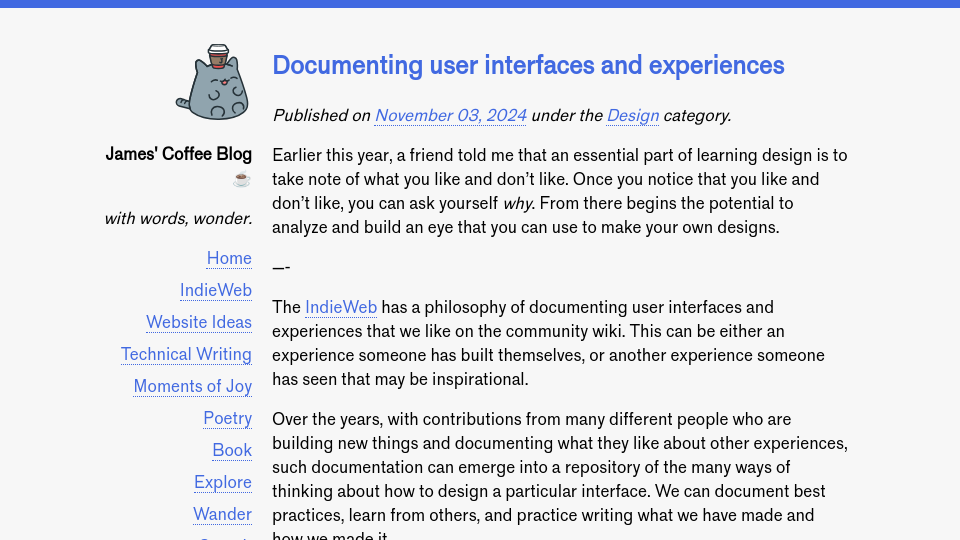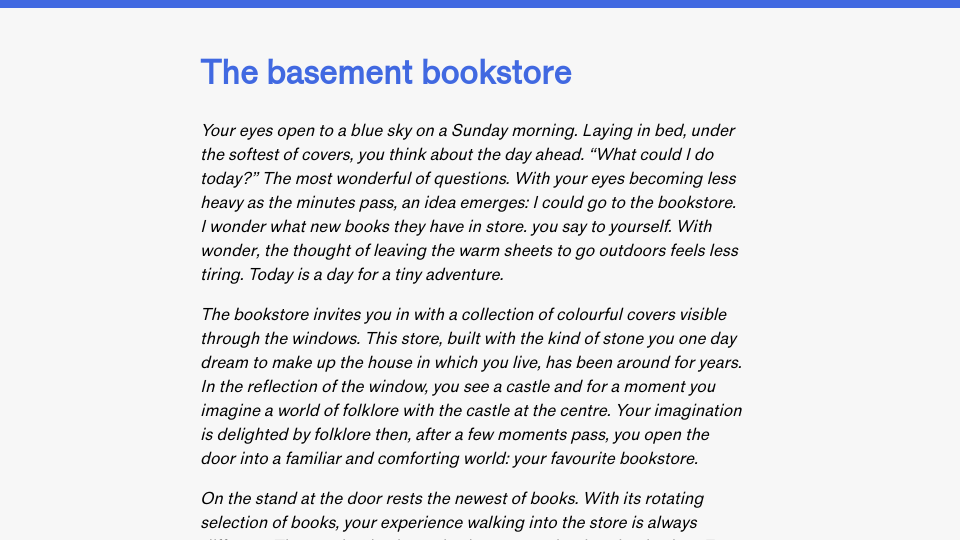Earlier this year, a friend told me that an essential part of learning design is to take note of what you like and don’t like. Once you notice that you like and don’t like, you can ask yourself why. From there begins the potential to analyze and build an eye that you can use to make your own designs.
—-
The IndieWeb has a philosophy of documenting user interfaces and experiences that we like on the community wiki. This can be either an experience someone has built themselves, or another experience someone has seen that may be inspirational.
Over the years, with contributions from many different people who are building new things and documenting what they like about other experiences, such documentation can emerge into a repository of the many ways of thinking about how to design a particular interface. We can document best practices, learn from others, and practice writing what we have made and how we made it.
I have seen people do this on their blogs, too. Maggie Appleton has a section on her site called Patterns, described as “A catalogue of design patterns gathered from my own observations and research.” I have referred to the posts in that collection many times, especially the ones on computational notebooks.
I want to document interface and design patterns I like on my website, too, both to highlight what I think are great examples of design, but also to practice thinking about why I like something.
Earlier today, I wrote a blog post about Slack’s search filters. I wanted to write:
- What the feature was.
- How the feature works.
- Why I like the feature, and what it helps me accomplish.
- Any parts of the design that stood out as particularly interesting.
Writing the post helped me think through the why behind my affinity for Slack’s search, and gave me the opportunity to share that with others, too.
As in all things, we stand on the shoulders of giants. Seeing examples of user experiences helps us figure out what shape a design could take. To the extent we can document good design, with analysis on what makes it good, we should – both for our own edification and the benefit of other designers and makers who are building new things.


